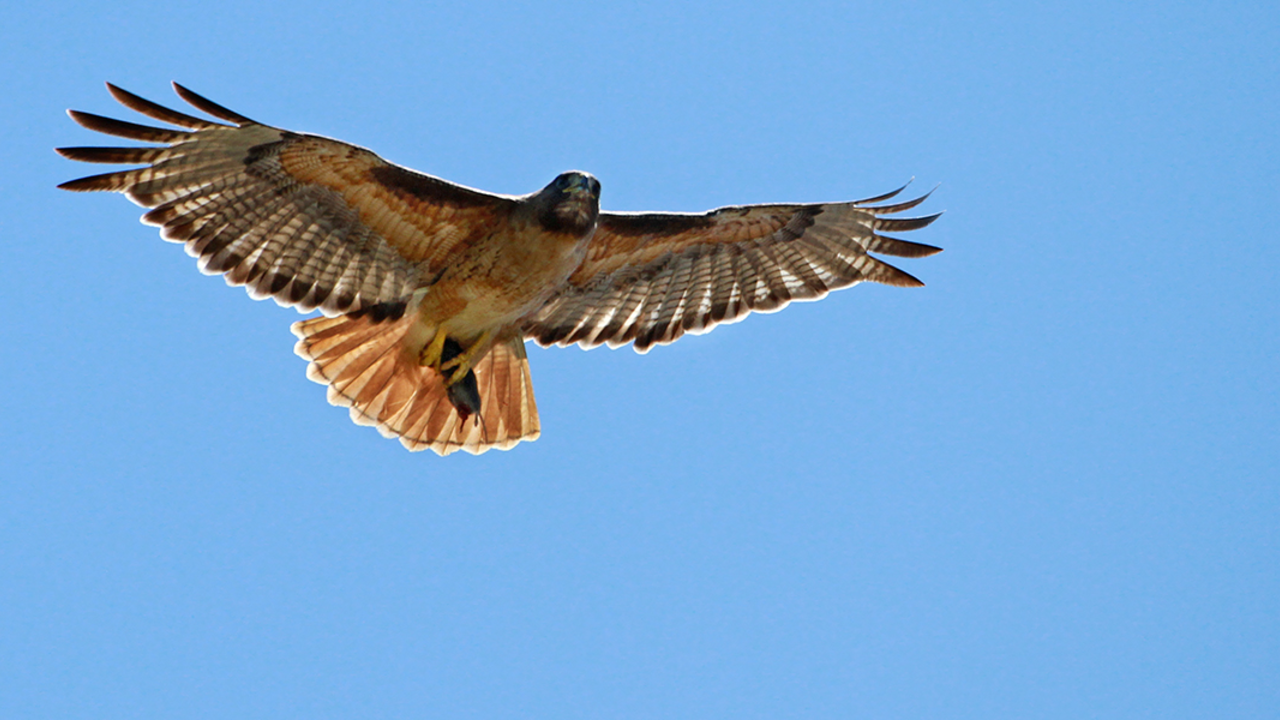Migratory Story: GGRO Intern Reflects on the Journey of Raptors—and Her Own

Will Elder/National Park Service
August 14th, Hawk Hill. It’s mid-morning, cold, and the fog consumes everything in its path, as to be expected—it is “Fogust” after all. It’s the first day of the raptor migration season, and I can’t wait to catch a glimpse of the first hawk to fly by. As I am coming to terms with the fact that we might get fogged out, I see a part in the clouds making way for some blue skies. There, I see it. A Red-tailed Hawk, one of the most commonly banded at the Golden Gate Raptor Observatory. As I lift my binoculars to focus on it, so do my spirits and I think, “It has begun.”
For over three decades, the Golden Gate Raptor Observatory (a program of the Parks Conservancy in cooperation with the National Park Service) has been collecting data on migrating raptors passing through the Golden Gate National Recreational Area in the Marin Headlands during the birds’ fall migration.
Through the efforts of more than 300 volunteers, thousands of hawks across 19 species are counted and banded by the GGRO each year—all in an effort to contribute to conservation research, engage local communities in citizen science, and educate the public about raptor ecology.
In some ways, it is fitting that I am now studying migration, since I emigrated from Venezuela during high school and have moved several times before landing in the Headlands.
There is something beautiful, yet also difficult, about a migration—both for hawks and people like myself. A young Red-tailed Hawk competes against other Redtails and predators to obtain their next meal and get enough energy to continue the long and arduous journey south. Granted, my struggles cannot compare to the life-or-death severity that raptors experience. But adaptation was also key for my survival in a new place—facing the difficulties of being a first-generation immigrant in a country where a different language is spoken and different customs are in place.
The desire for a better future and my passion for helping the natural world, however, inspire me every day to face my challenges. And in a similar way, a hawk’s instinct to prevail and carry on its genes drives it to face the challenges of a long migration south. Some remain in the Headlands, while others—like Swainson’s Hawks—make the odyssey all the way to central Argentina, and remain there until it is time to fly back north and raise a new generation of offspring.
The Golden Gate National Parks consist of so many diverse habitats, such as grasslands, rocky shorelines, and forests that provide a safe home for over 15 wintering species of raptors that remain in the Bay Area. Very often, I take for granted how fortunate we are to have all these protected lands and at such easy access to the general public.
I have found a welcoming place with a diverse array of both raptors and people. By simply walking around the Golden Gate Overlook in the Presidio, I have seen resident Red-shouldered Hawks making their way through the tall pine and cypress trees. Not too far from there, across the Golden Gate Bridge, I have caught sight of Turkey Vulture “kettles” rising with the warm Pacific Flyway created by the hills and valleys of the Headlands.
Like these birds, I like to climb high up into the mountain along the Rodeo Valley Trail and take in the vast golden scenery that transforms into a rainforest-type ecosystem created by the eucalyptus forest that traps the fog.
If you have the chance to come out to the Headlands, I encourage you to sit back and enjoy the sight of dozens of birds dominating the skies. I can guarantee that you will learn so much by just observing these creatures, some of which, like me, now call our park home.